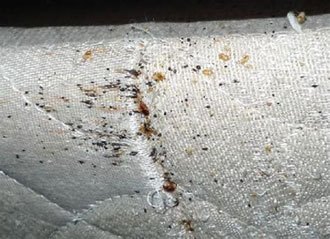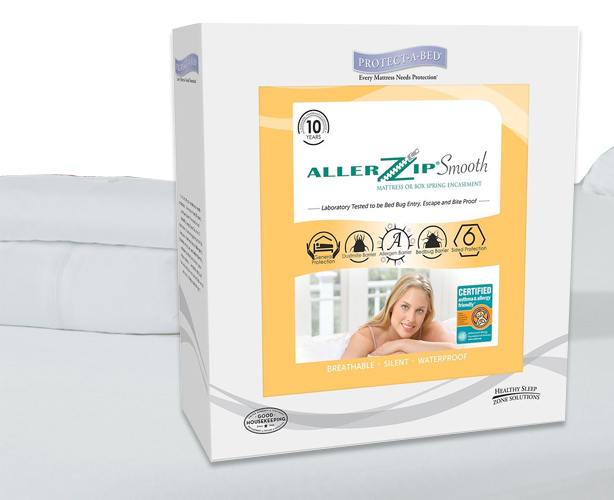Please choose a body region on the right for you to pin point the problem area of your body.

Shop by Condition

Shop by Brand
Bed bugs can be extremely hard to spot, given their incredibly small size. They can easily fit into cracks and spaces that are not wider than a credit card. Hence it comes as no surprise that most people seek professional help when they suspect a bed bug infestation at home. But whether you’re staying in a hotel room or in the safety of your home, there are some signs that can help you identify the presence of bugs in your bed.
 The key sign of an infestation is ‘bite marks’. Bed bugs, commonly spotted in beds (and beddings), cracks, couch cushions, curtains and furniture, have a tendency to suck blood from humans. They may even be present in clothing or luggage if an individual has recently come from a potentially infested location, such as a hotel room. There are multiple species of insects and mites that suck blood and the most common ones include lice, bed bugs, fleas and ticks.
The key sign of an infestation is ‘bite marks’. Bed bugs, commonly spotted in beds (and beddings), cracks, couch cushions, curtains and furniture, have a tendency to suck blood from humans. They may even be present in clothing or luggage if an individual has recently come from a potentially infested location, such as a hotel room. There are multiple species of insects and mites that suck blood and the most common ones include lice, bed bugs, fleas and ticks.
Although lice and bedbugs don’t really carry or spread disease, the bite of these pests could be a major nuisance.
If you suspect an infestation in your home, try and catch it early i.e. before it spreads or becomes established. And if you are living in a hotel room with infestation, notify the staff immediately and ask for a change of room. While treating minor infestations might be a little inconvenient, it is a lot less expensive than dealing with a widespread one.
A common dilemma faced by most people is ‘how to look for or identify bed bugs?’. Well, you might be able to spot an infestation more accurately if you look for some of these physical signs while changing or cleaning your bedding:
Lice are essentially six-legged, tiny insects that might be found in shades of white, brown or greys. These creatures usually have an oval-shaped body and while adults could be about 1/8 th an inch long, the eggs and nymphs mimic the size of small bed bugs
 The eggs of head lice are known to get attached to the scalp of the humans, typically at the back of the ears or close to the neck. These pests live almost always on their host but can be left behind in spaces where the individual has rested/slept, e.g. the bed or couch. Body lice can also be found in clothes and only attach to the human when they require a blood feed.
The eggs of head lice are known to get attached to the scalp of the humans, typically at the back of the ears or close to the neck. These pests live almost always on their host but can be left behind in spaces where the individual has rested/slept, e.g. the bed or couch. Body lice can also be found in clothes and only attach to the human when they require a blood feed.
Head or body lice is one of the primary reasons behind humans developing itchiness in various body parts, including the scalp. A key similarity between body lice and bed bugs is that they are generally found in areas where people stay in cramped or closed-up spaces and typically under unsatisfactory hygienic conditions. It is also common to find body lice in school-going kids because they may unknowingly come into contact with an infested child.
It is important to understand that you could find bed bugs even in highly sanitized or clean places like a five-star hotel or in posh residences. Infestation doesn’t have much to do with hygiene and cleanliness and usually enters a home through luggage and perhaps even through planes, buses, retail stores or movie theaters.
Even then, minor infestations of bed bugs or body lice require thorough cleaning of every items and individual inside a home. This could help prevent the spread of the infestation. And of course, prevention is always better than cure. You could use tools such as the AllerZip Smooth Mattress Protector, Anti-Allergy & Bed Bug to keep your mattress and beddings protected from infestation all-year round.
When bug bugs aren’t feeding on humans, they end up hiding in all kinds of places. For instance, you may spot them near the tags, seams and piping of your mattress, or in the cracks and opening in your headboard or bed frame.
When a room is severely infested, there is a high chance of finding bugs in the following places:
Some information about the living conditions of bed bugs may help you prevent or tackle an infestation more easily. Most importantly, bed bugs are capable of surviving and staying active even in extremely low temperatures such as 7°C (46°F). However, they die if their own body temperature hits 45°C (113°F).
When looking to use heat for killing bed bugs, it is vital to ensure that the room is even hotter so that sustained heat can reach the bugs, regardless of their hiding place. You can find the common varieties of bed bugs in almost all places where humans can live. The bed bugs in tropical areas are a little more difficult to kill than the common ones.
We always treat bed bugs directly. Hence, it is important to find their exact hiding position in your home or hotel room. This information will make it easier for you to target the right spots and kill the bed bugs without wasting chemical. And of course, missing bed bugs can lead to a more widespread infestation.
The use of tools such as a flashlight or a flat-edged object could help in inspecting places like dressers and the nightstand. Don’t forget to empty out your drawers and look into the joints and cracks for hiding bugs.
Learn About AllerZip Smooth Mattress Encasement by Protect-A-Bed
| Stay Connected! | |
|
|
|
Related Articles
Get $10 off your next order when you sign up to receive our email newsletter.*
Simply enter your email address below!
*Minimum order value of $100. Valid email address to qualify.








